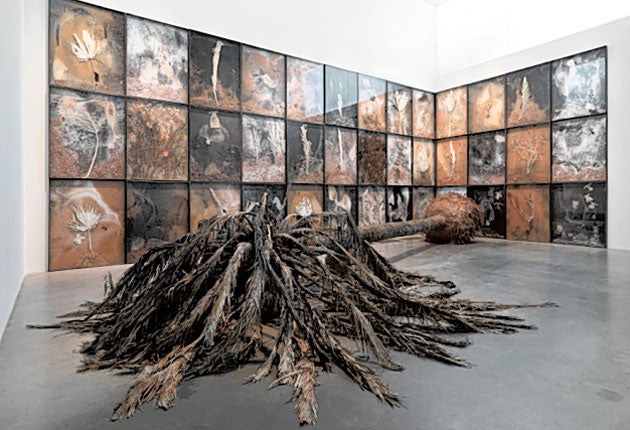Anselm Kiefer, Baltic, Gateshead
Space invader's sombre works scale the heights

Your support helps us to tell the story
From reproductive rights to climate change to Big Tech, The Independent is on the ground when the story is developing. Whether it's investigating the financials of Elon Musk's pro-Trump PAC or producing our latest documentary, 'The A Word', which shines a light on the American women fighting for reproductive rights, we know how important it is to parse out the facts from the messaging.
At such a critical moment in US history, we need reporters on the ground. Your donation allows us to keep sending journalists to speak to both sides of the story.
The Independent is trusted by Americans across the entire political spectrum. And unlike many other quality news outlets, we choose not to lock Americans out of our reporting and analysis with paywalls. We believe quality journalism should be available to everyone, paid for by those who can afford it.
Your support makes all the difference.This former flour mill on the banks of the Tyne is a difficult space for artworks to occupy and make sense of. The galleries on each floor are immense, tall-ceilinged voids, swimming up and away from you. Works can too easily look footlingly small, too insignificant for their own good. What the spaces thirst for is awe-inducing work. Step forward, Anselm Kiefer.
This mini-retrospective spanning 40 years of work is showing on the top two floors. This is a good decision because there is a viewing platform on the fifth floor that gives us a marvellous overview of the works. Kiefer, who was born in 1945, is generally regarded as the conscience of post-war German painting. He wrestles with great themes – Teutonic mythology, world religions, folklore, global history, the Holocaust and Germany's tortured response to its aftermath – and on a huge scale. His works are symbolically complicated structures, immensely grave. Their drama is enhanced by his range of materials, which, in addition to varieties of paint, can take in coilings of wire and organic matter such as blood or trees. I have seldom seen anyone caught smiling in front of a painting by Kiefer. They seem to demand long, brooding consideration, and a measure of silent reverence.
His paintings, often at least twice as tall as a man, and almost always so sombre in tone, look like bruised and battered witnesses to their own importance. They are heavily textured, weathered, as if they have been pummelled by the elements. He deals in ochres, greys, blacks, browns, and the occasional flaring of red when a flame of destruction is called for. This happens here in Palette (1981). The background of the canvas consists of rough, mingled slabbings of greys, blacks, muddy yellows. The brush strokes are fierily, slashingly criss-crossed, as if everything is fighting with everything else for dominion. Across the painting's middle a painted black cord runs, crudely done, and at the centre of that cord there is the roughest outline of an artist's palette. It is painted with such insouciance – as if it barely deserves to be there at all. The string that holds the palette in suspension is on fire. Tiny bursts of flame run along its length. The message is very clear: can this mere palette do anything, witness to anything meaningful, in the face of such destructive negativity?
Other paintings on display here take in Wagner's Parsifal, Hitler's Germany, meditations upon an obscure Russian Futurist called Khlebnikov, and an installation on the theme of Palm Sunday, which consists of a giant fallen palm tree and, behind it, two walls stacked with 39 paintings, which mystically circle and circle about the theme of Christ's death and promised resurrection. Palm Sunday is the installation that we can see from that viewing gallery.
One troubling thought. I am not entirely convinced that Doctor Goebbels would not have been moved by much of this work. After all, it could not be further removed from the kinds of degenerate that the Nazis condemned, and its themes – from Teutonic folklore to mysticism – are often so obfuscatory that the idiotic monsters might not even have noticed that Kiefer didn't like them. They might have fallen for the grandeur.
To 16 January 2011 (www.balticmill.com)
Join our commenting forum
Join thought-provoking conversations, follow other Independent readers and see their replies
Comments